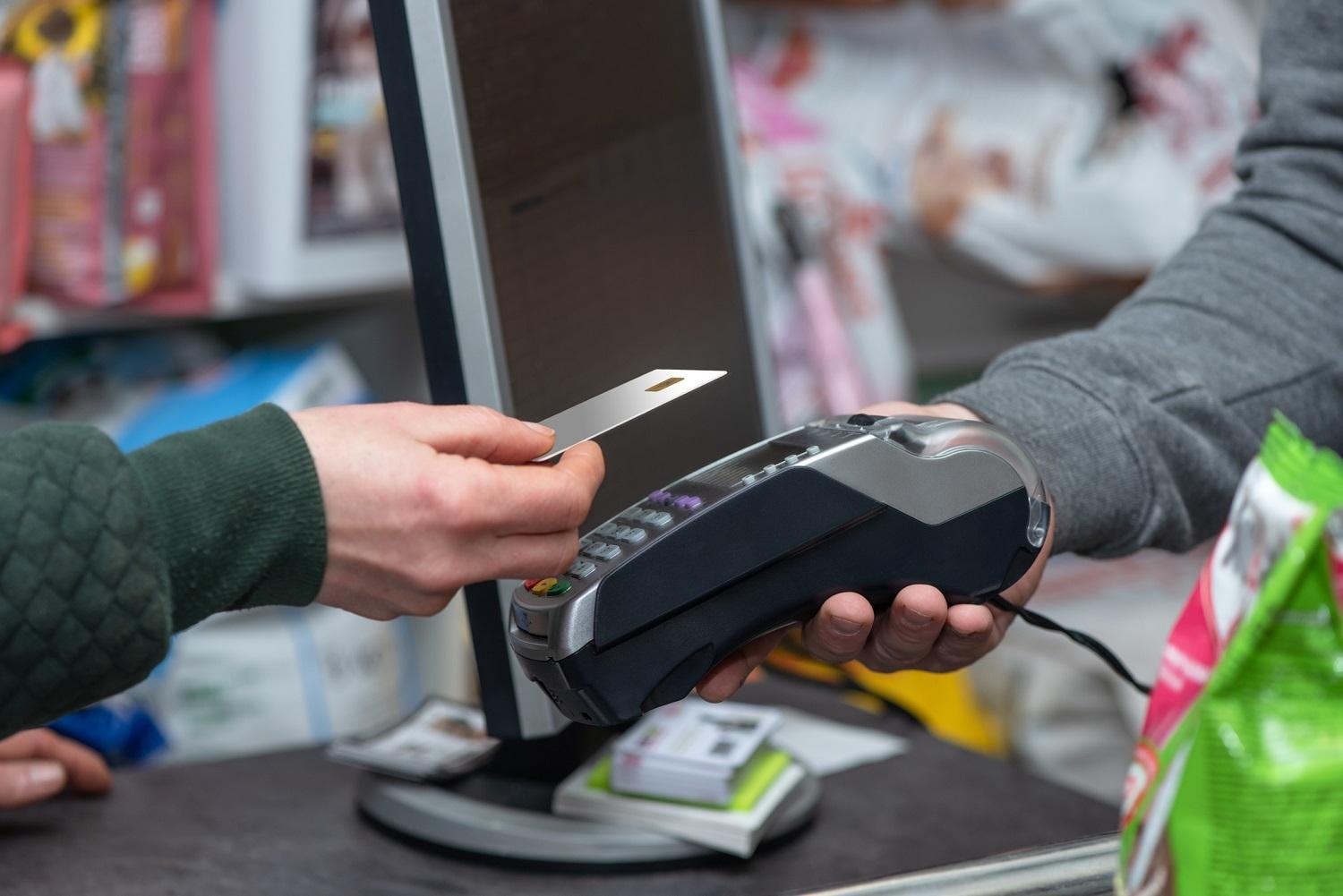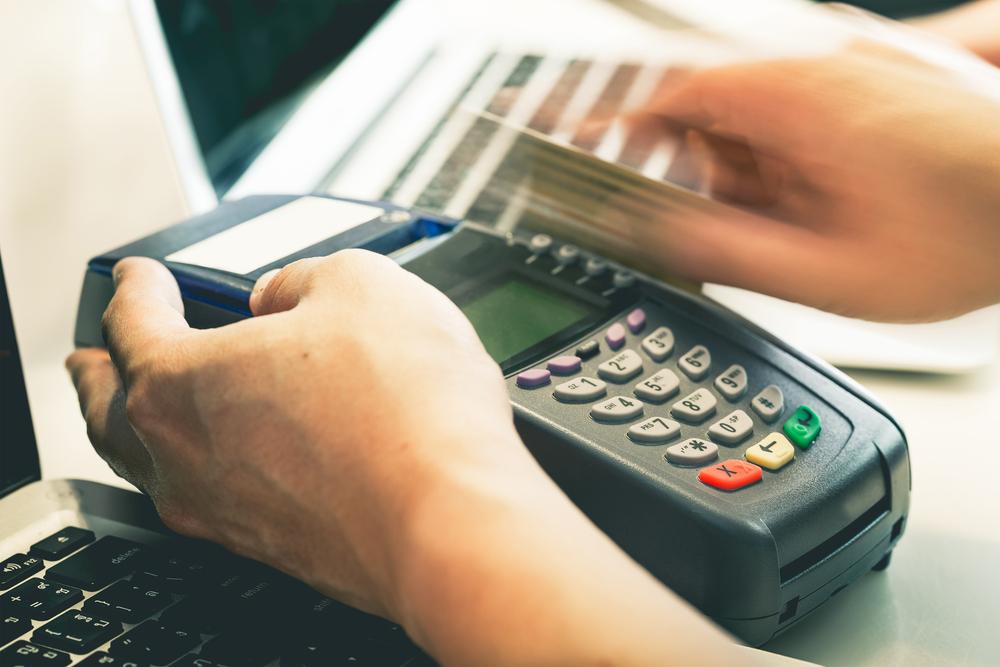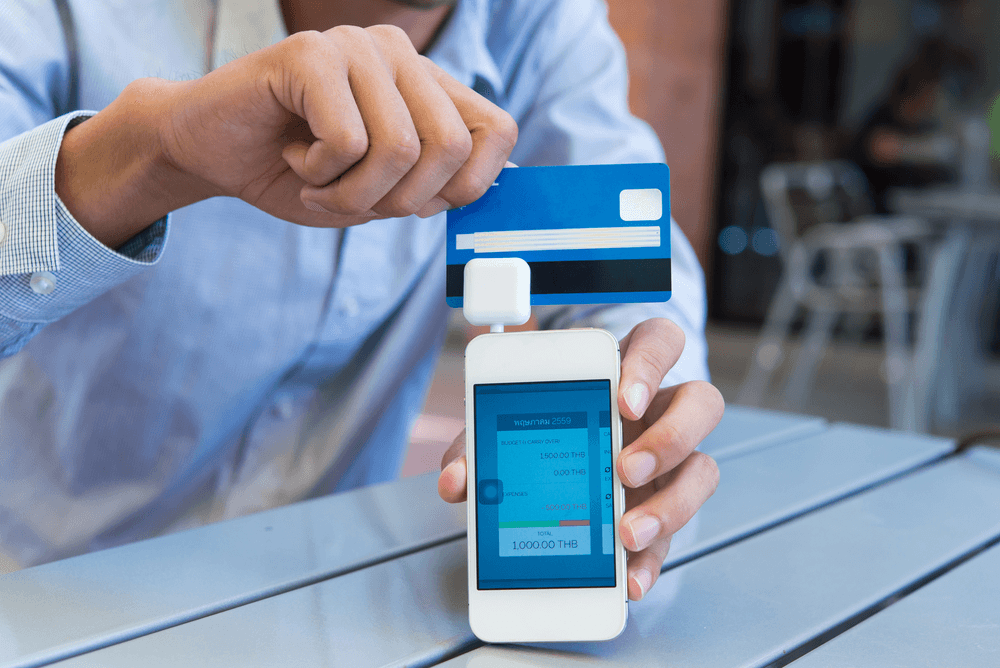Business News Daily provides resources, advice and product reviews to drive business growth. Our mission is to equip business owners with the knowledge and confidence to make informed decisions. As part of that, we recommend products and services for their success.
We collaborate with business-to-business vendors, connecting them with potential buyers. In some cases, we earn commissions when sales are made through our referrals. These financial relationships support our content but do not dictate our recommendations. Our editorial team independently evaluates products based on thousands of hours of research. We are committed to providing trustworthy advice for businesses. Learn more about our full process and see who our partners are here.
What Are Self-Service POS Kiosks?
Offering customers the option to do their own checkout has advantages and disadvantages. Find out if self-service POS kiosks are right for your business.
Table of Contents
Modern customers appreciate convenience and expedience, and as a result often gravitate towards self-service point-of-sale (POS) kiosks. These self-service terminals can supplement your cashiers stationed at a manned POS system, giving customers an alternative to waiting on a line. They can also help cut down on wage and salary expenses, which is especially useful for new and very small businesses with small teams and tight budgets.
Today, the best POS systems come with self-service kiosk options. When set up correctly, these kiosks can boost customer satisfaction and streamline transactions, reducing wait times and minimizing the staff you need on hand at any given time. Here’s a breakdown of how self-service POS kiosks work and their benefits so you can determine if this checkout method is right for your business.
Editor’s note: Looking for the right POS system for your business? Fill out the below questionnaire to have our vendor partners contact you about your needs.
Here’s a breakdown of how self-service POS kiosks work and their benefits so you can determine if this checkout method is right for your business.
>> Read next: The Best POS Systems of 2024
What is a self-service POS kiosk?
A self-service POS kiosk has much of the same functionality as a traditional POS system managed by employees. Customers can select products for sale on the kiosk’s touch screen or scan products using a barcode scanner, and the kiosk system adds up quantities, calculates sales tax and accepts payments.
With self-service POS kiosks, some of the functionality ordinarily available to a cashier is accessible only to an employee with login credentials. For example, if a customer is having trouble using the kiosk, a staffer with specific user access could intervene to resolve the issue.
Self-service POS kiosks aren’t only limited to retail locations, either. The best POS systems used in restaurants may include table top or countertop kiosks for customer self-service functions. These are increasingly common at bar and grill style restaurants, for example.
Which types of businesses use self-service POS kiosks?
Self-service POS kiosks may be useful for a variety of businesses. New businesses or those with very small teams may find them helpful for supporting staff members during busy hours. Small businesses on a tight budget may find automating much of their checkout process can save a considerable amount on wages.
There are some industries in which self-service POS kiosks are especially useful. Some of the most common types of businesses that use them include:
- Retailers: Self-service POS kiosks are now standard in grocers and big-box stores, where they typically exist alongside traditional crewed cashier stations.
- Restaurants: Kiosks are found in many fast-food, fast-casual and casual sit-down restaurants, including Chili’s and Olive Garden, which have tabletop units.
- Ticketing businesses: Self-service kiosks are ideal for businesses that sell tickets, including movie theaters, transportation facilities and sports arenas. These self-service units present ticketing options, accept payments, and print and dispense tickets.
- Businesses with appointment check-ins: While these aren’t technically POS systems because no payment is involved, self-service kiosks can streamline appointment check-ins for businesses such as salons, hotels and doctors’ offices.
Pros and cons of self-service POS kiosks
Offering customers the option to do their own checkout has advantages, but this setup isn’t suitable for every business type. Here’s a look at the pros and cons of self-service POS kiosks.
Pros
- Shorter wait times: Because self-service kiosks usually take up less space than full-service lines, self-service kiosks can significantly boost the number of customers checking out at one time, thereby shortening lines and wait times. Oftentimes, customers who are buying fewer products will opt for the self-service line, thus improving their satisfaction with the checkout process and resulting in fewer abandoned carts.
- Increased order size: Many kiosks can suggest complementary products and services, customization options and upselling suggestions during the checkout process. Tillster found that these order add-ons can increase the average order size by approximately 15 to 30 percent. Increasing basket size could be a great way for very small businesses to drive more revenue and boost the bottom line.
- Improved accuracy for special orders: When customers enter their own custom requirements into a self-service POS kiosk, there is a smaller chance of mistakes or omissions. Plus, customers won’t have to worry that they’re being perceived as “difficult” for having customizations.
- More freedom for employees: When self-service kiosks are implemented, fewer cashiers are needed to operate POS stations, giving employees more freedom. They can be redeployed to assist customers by answering questions, offering opinions and making product suggestions. These interactions are less repetitive and more fulfilling and enjoyable for employees and more valuable for customers.
- Better customer insights: CRM analytics built into your kiosk system can provide helpful information about your customers and how they perceive your business and its products. [Learn more about POS sales reports.]
- Higher customer satisfaction: Whether it’s the shorter wait time or the ability to purchase something without interacting with others, kiosks tend to improve customer satisfaction. Generating repeat business is especially important for new businesses and local, independent shops, and self-service POS kiosks may help drive more return customers.
Cons
- Customer frustration: If a customer doesn’t know how to use the kiosk or it malfunctions, they’ll probably be frustrated. Having an employee nearby to assist can offset this problem.
- Lack of physical flexibility: Large kiosks are difficult to move and may prevent a business from reconfiguring its store layout to meet changing needs.
- Potential for more shoplifting: When self-service kiosks are left unattended, shoplifting incidents can increase. You can help prevent this problem with robust security measures, such as employing security guards, installing a video surveillance system or stationing receipt checkers at your exits.
- Hardware or software failures: As with any technology, self-service kiosks are prone to occasional downtime. You’ll need to keep on top of regularly scheduled maintenance and software updates.
- High expense: Depending on the kiosk, buying and installing these machines can be a significant expense, with some costing more than $20,000.
- Complications with nonstandard transactions: If a purchase is complicated, a kiosk is not the best POS solution because customers may need to ask questions or may require help. Nor are self-service kiosks ideal for transactions that require age verification, such as alcohol sales.
- Impersonal checkout: Some businesses thrive because of warm interactions between customers and staff. If your business prioritizes personal service, a self-service kiosk would be a detraction, not an enhancement.
- Vulnerability to hacking: Hackers are a threat to kiosks. Cyberattacks can happen to the operating system through the company network or the kiosk’s applications. Kiosks running iOS are less vulnerable to hacking attempts, however, as are those implemented via cloud computing.
Types of self-service POS kiosks
The type of self-service POS kiosk most people are familiar with is the self-service retail units set up at checkouts in grocers and big-box stores. These machines typically have a touchscreen; a built-in barcode scanner; an integrated credit card reader; cash and change acceptance and dispensing functionality; a receipt printer; a small shelf; and a bagging area.
Depending on the vendor and level of functionality, these kiosks can cost anywhere from $1,500 to more than $20,000 each. Also keep in mind that this isn’t a one-size-fits-all POS solution. The best POS systems for grocery stores could differ from store to store, and the best option also varies by business type. For example, the best POS system for a convenience store may not be the best choice for a grocer.
Here are some other types of self-service POS kiosks to consider:
- Self-contained kiosks with large portrait order screens: Most of the real estate on this kind of kiosk is a giant touchscreen with an entry point for payment processing. It is commonly used for fast-food ordering.
- Tablet kiosks: Some kiosk POS software runs on iPads or Android tablets. iPad POS system setups securely hold the tablet in place and use a slim stand that’s about chest-high. These are some of the least-expensive kiosks, starting at less than $200 each.
- Ticketing kiosks: In addition to a touchscreen and payment mechanisms, ticketing kiosks must have room for a built-in ticket printer and ticket dispenser, so they tend to be larger overall, with a small or midsize screen. The ones stationed outside venues also tend to be more rugged, to withstand environmental hazards.
- Countertop/tabletop kiosks: These are portable, wireless kiosks with portrait or landscape orientation. Sometimes they have built-in payment processing; other times, they can be used to place orders but not pay for them. They are among the most affordable units and are often used by casual sit-down restaurants and small businesses.
Are self-service POS kiosks right for your business?
Deciding whether to implement self-service POS kiosks in your business requires careful consideration of various factors. Here, we break down the specific scenarios in which these kiosks can be beneficial and when they might not be the best fit.
Why self-service POS kiosks may be right for your business
You can reap many advantages from offering customers self-service POS kiosks. These systems might be right for your business in these cases:
- You have a high volume of transactions. Businesses such as grocery stores, outdoor arenas, fast-food restaurants and big-box retailers benefit from the speed and efficiency of self-service kiosks. These systems can handle transactions faster than cashiers can, thereby reducing wait times. Businesses with frequent transactions can speed up the checkout process with self-service POS kiosks.
- Your customers value convenience and speed. If your customers prefer quick, no-fuss transactions, self-service kiosks can enhance their shopping experience. These kiosks allow consumers to check out or place orders without waiting for a cashier or waiting in slow-moving lines.
- You want to reduce labor costs. Self-service kiosks reduce the number of cashiers needed and allow your business to reallocate staff to tasks such as customer service and inventory management. This is especially helpful for small businesses that might not have large profit margins, as self-service kiosks can help balance out labor costs.
- You want to encourage upselling. Self-service kiosks can be programmed to suggest additional items or upgrades, which can increase the average transaction value. This technique is particularly effective in restaurants and retail environments.
- You want to enhance customer satisfaction. Shorter lines, reduced wait times and the ability to customize orders independently could increase customer satisfaction and encourage repeat business. If customer retention is an issue in your establishment, self-service kiosks may help.
Why self-service POS kiosks may not be right for your business
Self-service POS kiosks have many upsides, but they aren’t for everyone. These kiosks probably aren’t right for your business in the following circumstances:
- Your customers value human interaction. Some customers prefer the personalized conversation and face-to-face interactions that come with cashier-led checkouts. Self-service kiosks remove human interaction.
- Your transactions are complex and require human intervention. If your business deals with complex transactions that often require personal assistance — such as custom orders, complicated discounts or products requiring age verification — a kiosk may not be the best fit.
- You have limited space. Large kiosks can take up significant floor space, which may not be feasible for smaller establishments.
- Your customer base is not tech-savvy. If your customers are not comfortable with technology, they may find self-service kiosks frustrating or difficult to use, making them less likely to patronize your store.
- You have a tight budget. While kiosks can save on labor costs in the long run, the initial investment can be substantial, with some units costing upward of $20,000. This may make implementing self-service POS kiosks financially impractical for your business.
Self-service POS kiosks: A hands-off checkout approach
Choosing what kinds of self-service POS kiosks to implement in your business, if any at all, is a significant decision that depends on various factors, including your business type, customer preferences, transaction complexity, available space and budget. Self-service kiosks can revolutionize your business operations, but ultimately, the decision to use them should align with your company goals. With a tailored POS system, you can provide a seamless checkout experience that benefits both your customers and your business.
Amanda Clark contributed to this article.






